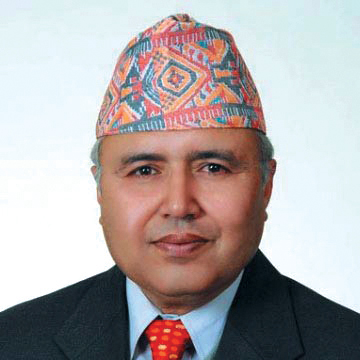Government looks set to promote pork barrel politics
Grants allocated for programmes named after political leaders and other personalities may not cater to the needs of a wider range of people
Kathmandu, May 23
The government seems committed to squandering more of taxpayers’ money in the next fiscal year, as it is all set to promote pork barrel politics by raising the portion of grants for various electoral constituencies.
Such a move is expected to create additional financial burden on the state where grants and subsidies already account for a third of government’s actual annual spending.
Government’s allocation on grants and subsidies, both recurrent and capital, has been continuously rising in the last one decade.
In fiscal year 2005-06, the government spent Rs 30.07 billion on grants and subsidies, which was 27.12 per cent of actual annual spending or 4.6 per cent of the gross domestic product, show the data of the Financial Comptroller General Office.
The amount soared to Rs 174.94 billion in the last fiscal, accounting for 32.92 per cent of the government’s actual annual spending or 8.25 per cent of GDP.
“Grants and subsidies, whether capital or recurrent, tend to continuously add financial burden on the state because you cannot abruptly discontinue doling out these funds,” former finance secretary Rameshwore Khanal told The Himalayan Times.
“If a government tries to discontinue such programmes, it becomes unpopular, which puts a drain on vote bank of the political party leading the government.
“But if it gives continuity to those programmes, fiscal deficit can widen. And to cover that deficit, the government needs to raise more of domestic debt, which can crowd out private investment.”
Despite these downsides, governments spend quite a big amount on grants and subsidies. This includes money spent on operating social protection programmes, such as old-age benefits and scholarships for the needy.
Nepal, which has envisaged creation of a welfare state, will definitely spend more money in these areas in the coming years to improve lives of the poor and the vulnerable.
Yet what is also true is that not all grants and subsidies are progressive.
“For instance, grants extended to village development committees to build infrastructure projects may help in capital formation, job creation and economic development,” said Khanal.
“But, on the other hand, grants allocated for programmes named after political leaders and other personalities may not cater to the needs of a wider range of people.”
This is exactly what public finance experts like Khanal fear will happen if the government doles out more funds to lawmakers.
Currently, the government extends Rs 2 million to each lawmaker under the Constituency Development Programme and another Rs 15 million to each electoral constituency under the Constituency Infrastructure Special Programme.
Funds extended through these programmes, government officials said, have very little development impact because lawmakers use the fund to build small projects or use it to serve their vested interest and secure vote banks.
Despite knowing this, the government is mulling over raising allocation under the Constituency Development Programme and the Constituency Infrastructure Special Programme to Rs 5 million and Rs 25 million, respectively.
If this plan is implemented, it will immediately add financial burden of at least Rs 4 billion on the state.
“The government must rein in this practice of distributing funds that do not yield productive results. Otherwise, the allocation will continue to go up every passing year, making it unaffordable to finance,” said Khanal.
A sneak peek of how such allocations can bulge over the years is offered by grants extended to VDCs.
The practice of extending grants to VDCs started in 1994-95, when the government led by CPN-UML launched a programme called ‘Build Your Own Village’, under which Rs 300,000 was extended to each VDC.
Later, Nepali Congress changed the name of the programme to ‘Rural Self-Help’ and jacked up grant amount for each VDC to Rs 500,000. After some time, the government started extending one million rupees in grant to each village development committee.
Today, the size of grant for each VDC has bulged to a minimum of Rs 1.95 million and a maximum of Rs 5.05 million.
But as the size of grants to VDCs has swelled, audit reports of the Office of Auditor General have started highlighting cases of misappropriation of funds.
This is the same in the case of the Constituency Development Programme and the Constituency Infrastructure Special Programme.
“When parliamentarians get entangled in cases of misappropriation how can they question the government’s motives? So, demands made by parliamentarians to allocate more funds for constituencies are tantamount to demanding more bribes,” said Khanal.
He added, “Parliament should work as a watchdog and closely monitor activities of the government. If it colludes with the executive body, it will only weaken democracy.”






